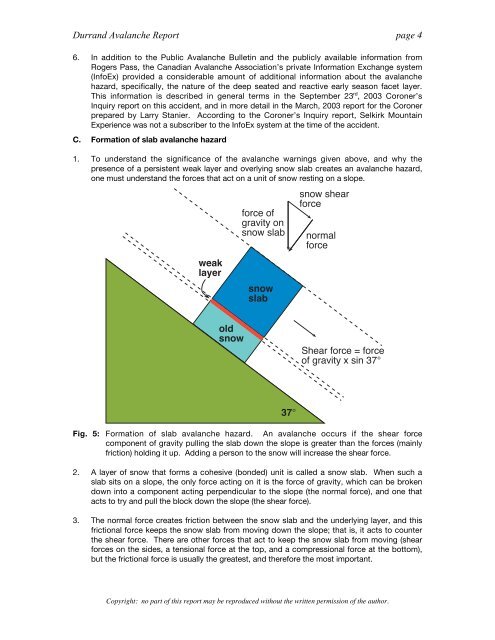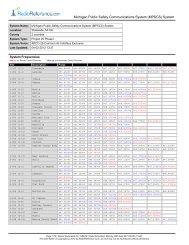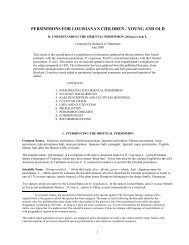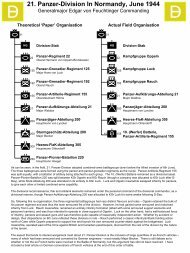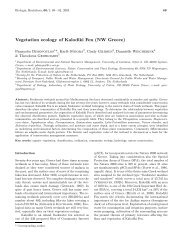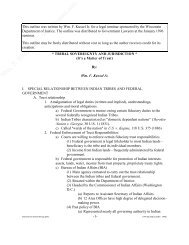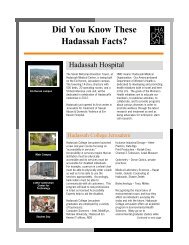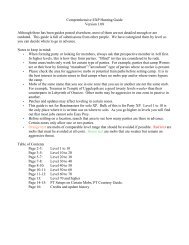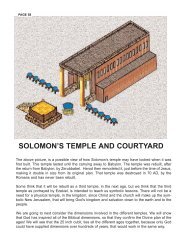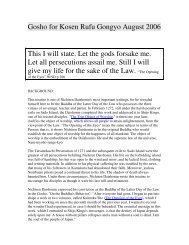Analysis of the Durrand Glacier Avalanche Accident
Analysis of the Durrand Glacier Avalanche Accident
Analysis of the Durrand Glacier Avalanche Accident
Create successful ePaper yourself
Turn your PDF publications into a flip-book with our unique Google optimized e-Paper software.
<strong>Durrand</strong> <strong>Avalanche</strong> Report page 4<br />
6. In addition to <strong>the</strong> Public <strong>Avalanche</strong> Bulletin and <strong>the</strong> publicly available information from<br />
Rogers Pass, <strong>the</strong> Canadian <strong>Avalanche</strong> Association’s private Information Exchange system<br />
(InfoEx) provided a considerable amount <strong>of</strong> additional information about <strong>the</strong> avalanche<br />
hazard, specifically, <strong>the</strong> nature <strong>of</strong> <strong>the</strong> deep seated and reactive early season facet layer.<br />
This information is described in general terms in <strong>the</strong> September 23 rd , 2003 Coroner’s<br />
Inquiry report on this accident, and in more detail in <strong>the</strong> March, 2003 report for <strong>the</strong> Coroner<br />
prepared by Larry Stanier. According to <strong>the</strong> Coroner’s Inquiry report, Selkirk Mountain<br />
Experience was not a subscriber to <strong>the</strong> InfoEx system at <strong>the</strong> time <strong>of</strong> <strong>the</strong> accident.<br />
C. Formation <strong>of</strong> slab avalanche hazard<br />
1. To understand <strong>the</strong> significance <strong>of</strong> <strong>the</strong> avalanche warnings given above, and why <strong>the</strong><br />
presence <strong>of</strong> a persistent weak layer and overlying snow slab creates an avalanche hazard,<br />
one must understand <strong>the</strong> forces that act on a unit <strong>of</strong> snow resting on a slope.<br />
weak<br />
layer<br />
force <strong>of</strong><br />
gravity<br />
old<br />
snow<br />
force <strong>of</strong><br />
gravity on<br />
snow slab<br />
shear<br />
force<br />
snow<br />
slab<br />
normal<br />
force<br />
37°<br />
snow shear<br />
force<br />
normal<br />
force<br />
Shear force = force<br />
<strong>of</strong> gravity x sin 37°<br />
Fig. 5: Formation <strong>of</strong> slab avalanche hazard. An avalanche occurs if <strong>the</strong> shear force<br />
component <strong>of</strong> gravity pulling <strong>the</strong> slab down <strong>the</strong> slope is greater than <strong>the</strong> forces (mainly<br />
friction) holding it up. Adding a person to <strong>the</strong> snow will increase <strong>the</strong> shear force.<br />
2. A layer <strong>of</strong> snow that forms a cohesive (bonded) unit is called a snow slab. When such a<br />
slab sits on a slope, <strong>the</strong> only force acting on it is <strong>the</strong> force <strong>of</strong> gravity, which can be broken<br />
down into a component acting perpendicular to <strong>the</strong> slope (<strong>the</strong> normal force), and one that<br />
acts to try and pull <strong>the</strong> block down <strong>the</strong> slope (<strong>the</strong> shear force).<br />
3. The normal force creates friction between <strong>the</strong> snow slab and <strong>the</strong> underlying layer, and this<br />
frictional force keeps <strong>the</strong> snow slab from moving down <strong>the</strong> slope; that is, it acts to counter<br />
<strong>the</strong> shear force. There are o<strong>the</strong>r forces that act to keep <strong>the</strong> snow slab from moving (shear<br />
forces on <strong>the</strong> sides, a tensional force at <strong>the</strong> top, and a compressional force at <strong>the</strong> bottom),<br />
but <strong>the</strong> frictional force is usually <strong>the</strong> greatest, and <strong>the</strong>refore <strong>the</strong> most important.<br />
Copyright: no part <strong>of</strong> this report may be reproduced without <strong>the</strong> written permission <strong>of</strong> <strong>the</strong> author.


